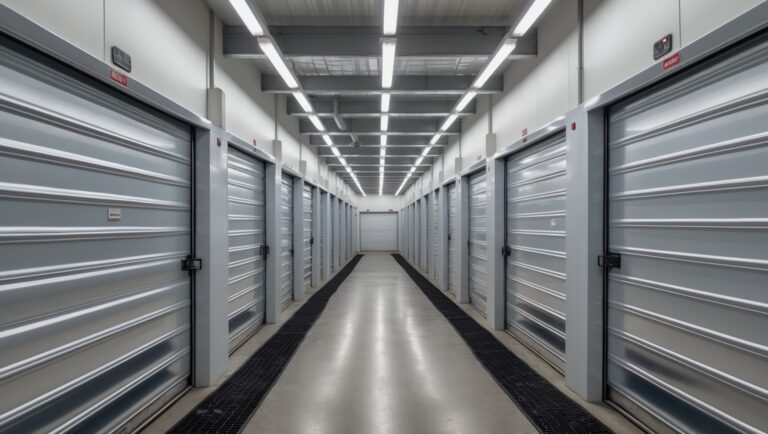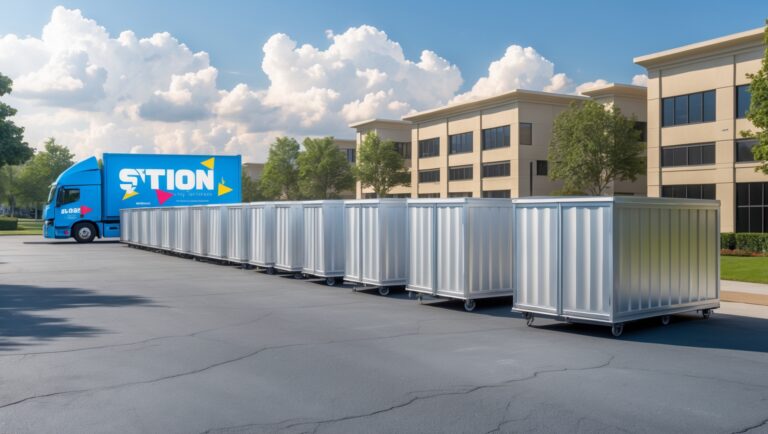Innovative Marketing Strategies for Local Moving & Storage Companies
Introduction: The Marketing Dilemma for Local Moving & Storage Businesses
Running a local moving and storage company presents unique challenges in a fiercely competitive industry. While word-of-mouth and repeat business are important, relying solely on these traditional channels is no longer enough to guarantee sustainable growth. The local market is crowded, with franchise giants, independent operators, and digital disruptors all vying for the same customers. So, how can your business stand out and consistently attract new clients?
The answer lies in adopting innovative, tailored marketing strategies — tactics designed specifically for the nuances of moving and storage operations. This comprehensive guide will walk you through actionable steps to elevate your marketing game. From leveraging hyperlocal SEO and optimizing Google Business Profiles to creative community partnerships and targeted online advertising, we’ll cover proven approaches that drive measurable results. Whether you’re a veteran owner or just starting out, these strategies can help you build a stronger brand, fill your calendar with bookings, and position your company as the go-to choice in your area.
Understanding Your Local Market
Analyzing Your Ideal Customer Profile
Before launching any marketing campaign, you need a crystal-clear understanding of your target audience. In moving and storage, your ideal customers may include:
- Homeowners relocating within the region
- Renters moving apartments
- Businesses seeking commercial moves or storage solutions
- College students during semester transitions
- Military families or government employees facing frequent relocations
Use your past booking data to identify patterns: age, location, service types, and common pain points. Consider sending out post-move surveys to gather feedback on why clients chose your company and what could be improved.
Assessing the Local Competitive Landscape
Research your main competitors. Analyze their web presence, customer reviews, advertised services, and pricing. Tools like Google Maps, Yelp, and industry-specific directories can help you spot gaps in their offerings or weaknesses in their customer service. This intelligence will inform both your messaging and service differentiation.
Building a Strong Local Brand
Crafting a Memorable Brand Identity
Your brand is more than just a logo and color palette. It’s the sum of every interaction customers have with your company. Develop a brand voice that reflects reliability, professionalism, and friendliness. Use consistent visual elements across your website, vehicles, uniforms, and storage facility signage.
Storytelling: Sharing Your Local Roots
Emphasize your connection to the community. Share your company’s origin story on your website and social media. Highlight your team’s local expertise and involvement in neighborhood events. This builds trust and emotional resonance with potential clients, especially those who prefer to support local businesses over national chains.
Hyperlocal SEO: Be Found Where It Matters
Optimizing Your Google Business Profile
Your Google Business Profile is often the first impression customers get. Ensure your profile is complete and accurate:
- Use your official business name and precise address
- Add high-quality images of your facility and trucks
- List all services (e.g., packing, storage, local/long-distance moving)
- Post regular updates and special offers
- Encourage satisfied clients to leave detailed reviews
Optimizing for “Near Me” and Local Keywords
Integrate location-based keywords into your website copy, headings, and meta descriptions. Examples:
- “Moving company in [City Name]”
- “Climate-controlled storage units near [Neighborhood]”
- “Affordable movers [City]”
Produce content addressing local moving challenges, such as parking restrictions or seasonal weather tips. These efforts help your business rank higher in local search results, driving organic traffic and qualified leads.
Content Marketing: Educate and Engage
Developing a Resource-Rich Blog
Maintaining an informative blog positions your company as an industry authority. Create posts that answer common customer questions, such as:
- How to prepare for a cross-town move
- Tips for storing delicate or valuable items
- Guides on packing materials and techniques
- Seasonal moving checklists tailored to your region
Include internal links to your services and encourage readers to contact you for personalized advice. Well-crafted content also boosts your SEO footprint.
Video Content: Facility Tours and Tutorials
Short, professionally shot videos can showcase your storage facility’s security features, demonstrate best packing practices, or introduce your moving crew. Host videos on YouTube and embed them on your website. Video content increases engagement and builds trust by putting a face to your business.
Strategic Partnerships and Community Involvement
Partnering with Local Businesses
Form alliances with complementary businesses such as real estate agencies, apartment complexes, cleaning services, and home improvement stores. Offer referral incentives or co-branded promotions. These partnerships expand your reach and lend credibility through association.
Sponsoring Community Events
Consider sponsoring local sports teams, charity runs, or neighborhood festivals. Set up a branded booth or offer free moving boxes at events. Not only does this boost brand visibility, but it also signals your commitment to the community.
Cross-Promotional Campaigns
Collaborate with partners on seasonal giveaways or educational workshops (e.g., “Decluttering for a Move”). Feature each other on social media and in email newsletters to tap into each other’s customer bases.
Online Advertising That Works
Pay-Per-Click (PPC) Campaigns
Target customers actively searching for moving or storage services using Google Ads and Bing Ads. Focus on high-intent keywords like “moving company near me,” “short-term storage units,” or “last-minute movers.” Set up geo-targeting to ensure ads only appear to users in your service area.
Social Media Advertising
Use Facebook and Instagram ads to promote special offers or highlight unique services. Target ads by location, age, and interests such as new home buyers or renters. Retarget website visitors who didn’t book right away, reminding them of your value proposition.
Harnessing the Power of Customer Reviews
Proactively Requesting Reviews
After each successful move or storage rental, send a friendly follow-up email or SMS with links to your Google, Yelp, and Facebook profiles. Personalize your request and explain how their feedback helps your business improve. Consider offering a small thank-you incentive, such as a discount on future services.
Responding to Feedback
Respond promptly and professionally to all reviews, positive or negative. Thank happy customers for their business. For any complaints, apologize and offer to resolve the issue offline. Prospective clients pay close attention to how you handle criticism, so professionalism here can win future bookings.
Email Marketing: Stay Top of Mind
Building a Local Email List
Collect email addresses from website inquiries, past clients, and event participants. With permission, add them to a segmented email list for tailored communication.
Sending Value-Driven Campaigns
Share seasonal moving tips, exclusive discounts, or updates about new services. Use attention-grabbing subject lines and clear calls to action. Email marketing keeps your business top of mind and encourages repeat business or referrals.
Leveraging Technology for Better Engagement
Online Booking and Quoting Tools
Implement user-friendly online booking and instant quote calculators on your website. Make it easy for potential customers to get pricing information and reserve your services without having to call. The less friction, the higher the conversion rate.
Chatbots and Live Chat
Enable live chat support or AI-powered chatbots to answer common questions instantly. This improves user experience, reduces bounce rates, and can capture leads after hours.
Tracking and Measuring Your Marketing Efforts
Setting Up Analytics
Install Google Analytics and Google Search Console on your website. Monitor traffic sources, user behavior, and conversion rates. Track which blog posts, ads, or referral sources generate the most leads.
Adjusting Based on Data
Review your metrics monthly. Pause underperforming campaigns, double down on successful channels, and continually test new ideas. Data-driven decisions ensure you maximize your marketing ROI.
Conclusion: Sustained Growth Through Strategic Marketing
Marketing a local moving and storage company in today’s digital-first world requires more than sporadic ads or the occasional flyer. It takes a coordinated, multi-channel approach rooted in understanding your customers, building a trustworthy brand, and leveraging technology to reach people where they are looking for solutions. By focusing on hyperlocal SEO, creative partnerships, content marketing, and robust customer engagement, you set your business apart from competitors and create a steady pipeline of new leads.
Remember, the most effective strategies are those tailored to your specific market, regularly measured for impact, and adjusted as trends evolve. Start small if you must, but keep building: nurture your email list, refine your ad targeting, and keep your website and Google Business Profile fresh and inviting. The rewards — sustained growth, customer loyalty, and a reputation as the go-to local mover and storage provider — are well worth the effort. Invest in your marketing, and you’ll invest in the future success of your business.






